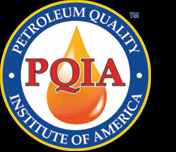Super XXX 10W30
New World Sales, Midlothian, IL
![]() Test
Results on this sample indicate the product can cause damage
to passenger car engines.
Test
Results on this sample indicate the product can cause damage
to passenger car engines.
 Purchased
in: Melrose Mart, Melrose IL
Purchased
in: Melrose Mart, Melrose IL
Date of purchase: 11/14/2012
CONSUMER ALERT: The label on this product states "10W30 Motor Oil." Test results show this product is not an SAE 10W-30, and does not meet any recognized specifications for motor oil. The viscosity for this oil is close to 75% below where it should be for a SAE 10W-30.
To consumer's who likely don't relate to what viscosity means, if you see this brand on the shelf at a convenience store, shake the bottle; it will sound like water in a bottle.
Further, the product tested contains 97 parts per million of silicon. Silicon is typically associated with abrasive material that can be harmful to an engine. The sample tested shows an oil that should not be used in an automobile engine as it could cause engine damage. See Video-->
Consumers should also take note that the back label on this brand states "It is designed for use in older model automobiles requiring SB specifications and where economy is a major consideration." For those unfamiliar with the API Service Classifications, API SB was designed for vehicles manufacturers between 1930 and 1963. Further, these oils are deemed by the API to be "obsolete" and "can cause equipment harm."
|
PETROLEUM QUALITY INSTITUTE OF AMERICA TEST PROGRAM
|
 |
||
|
Super XXX |
|||
| PHYSICAL TESTS | Standard/ranges-b | Average-e | |
| TBN, mg KOH/g, (ASTM D2896) | 0.38 | ||
| Viscosity @ 100ºC, cSt, (ASTM D445) | 9.3 to 12.5 | 2.4 | |
| Viscosity @ 40ºC, cSt, ASTM D445 | 9.3 | ||
| Viscosity Index (ASTM D2270) | 64 | ||
| Viscosity @ -25ºC mPa s (cP) (ASTM D5293) | 7,000 Max | 514 | |
| Volatility, mass % loss, 1 hr, @ 250ºC (ASTM D5800) | n/r | ||
| ELEMENTAL ANALYSIS-c | |||
| Additives | |||
| Calcium | <1 | ||
| Magnesium, ppm | <1 | ||
| Phosphorus, ppm | 6 | ||
| Zinc, ppm | <1 | ||
| Molybdenum, ppm | <1 | ||
| Barium, ppm | <1 | ||
| Boron, ppm | <1 | ||
| Silicon, ppm-d | 97 | ||
| Potassium, ppm | <1 | ||
| Manganese, ppm | <1 | ||
| Titanium, ppm | <1 | ||
| Copper, ppm | <1 | ||
| Sodium, ppm | <1 | ||
| Vanadium, ppm | <1 | ||
| Contaminants | |||
| Silver, ppm | <1 | ||
| Aluminum, ppm | <1 | ||
| Chromium, ppm | <1 | ||
| Iron, ppm | <1 | ||
| Nickel, ppm | <1 | ||
| Lead, ppm | <1 | ||
| Antimony, ppm | <1 | ||
| Tin, ppm | <1 | ||
|
a- Click here for product label. b- Standards, shown in yellow are established by API, SAE and others. Ranges, shown in teal, represent the high and low data for the 13 major brands of API SN ILSAC GF-5 tested in September 2011. c-Test Method for metal analysis is ASTM ASTM D5185. d- Although silicon is used as an antifoam additive in lubricants, concentrations above 7ppm have been linked to contamination from abrasive material, e- Average of the 13 major brands of API SN ILSAC GF-5 tested in September 2011. |
|||
|
|
||||
| Super XXX | ||||
|
The American
Petroleum
Institute sets
forth a number
of laboratory
and engine tests
required to meet
their
performance
specification.
Although
laboratory tests
alone cannot be
used to
establish if an
engine oil meets
API
specifications
they can be used
to determine if
it doesn't. |
||||
| Viscometrics | ||||
|
The viscometrics DO NOT meet the required targets for a 10W-30.
Click here for more on chart and Viscosity@100șC,cSt Click here for about chart and Viscosity @ -30șC
|
||||
|
|
||||
| FRONT AND BACK LABELS FROM PRODUCT TESTED | ||||
|
|
|||
|
|
|
|||

